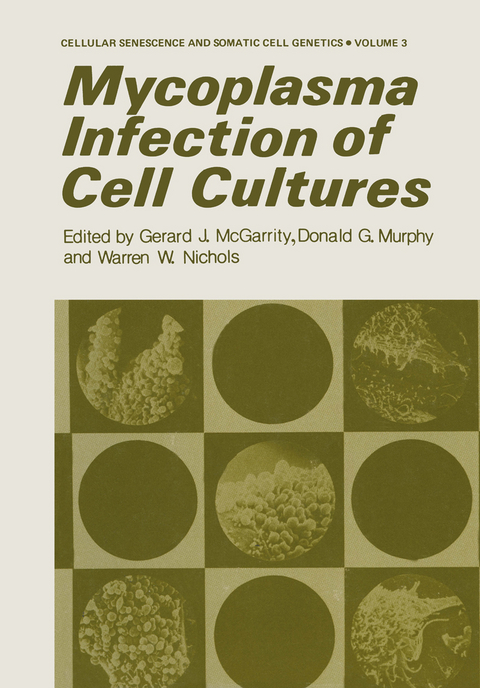
Mycoplasma Infection of Cell Cultures
Springer-Verlag New York Inc.
978-1-4684-9876-9 (ISBN)
Basic Properties of Mycoplasmas.- Biology of the Mycoplasmas.- Incidence and Sources of Mycoplasma Contamination: A Brief Review.- Microbiological Detection.- Cultural and Serologic Procedures for Mycoplasmas in Tissue Culture.- Microbiological Methods and Fluorescent Microscopy for the Direct Demonstration of Mycoplasma Infection of Cell Cultures.- Biochemical and Biophysical Detection.- Principles of Morphological and Biochemical Methods for the Detection of Mycoplasma Contaminants of Cell Cultures.- Biochemical Methods for Detecting Mycoplasma Contamination.- Detection of Mycoplasma Contamination of Cell Cultures by Electron Microscopy.- Effects of Mycoplasmas on Cell Cultures.- Some Effects That Mycoplasmas Have Upon Their Infected Host.- Mycoplasma-Cell Culture-Virus Interactions: A Brief Review.- Genetic Effects of Mycoplasma.- Mycoplasmas in Relation to Amniocentesis.- Effects of Mycoplasmas on Lymphocyte Cell Cultures.- Clinical Importance of Detecting Mycoplasma Contamination of Cell Cultures.- Phenotypic Alterations in Mammalian Cell Lines After Mycoplasma Infection.- Control Methods.- Methods of Prevention, Control, and Elimination of Mycoplasma Infection.- Cell Culture Mycoplasmas: A Bibliography.
| Erscheint lt. Verlag | 21.10.2012 |
|---|---|
| Reihe/Serie | Cellular Senescence and Somatic Cell Genetics ; 3 |
| Zusatzinfo | 29 Illustrations, black and white; X, 342 p. 29 illus. |
| Verlagsort | New York, NY |
| Sprache | englisch |
| Maße | 178 x 254 mm |
| Themenwelt | Studium ► 1. Studienabschnitt (Vorklinik) ► Anatomie / Neuroanatomie |
| Naturwissenschaften ► Biologie ► Genetik / Molekularbiologie | |
| ISBN-10 | 1-4684-9876-2 / 1468498762 |
| ISBN-13 | 978-1-4684-9876-9 / 9781468498769 |
| Zustand | Neuware |
| Haben Sie eine Frage zum Produkt? |
aus dem Bereich


